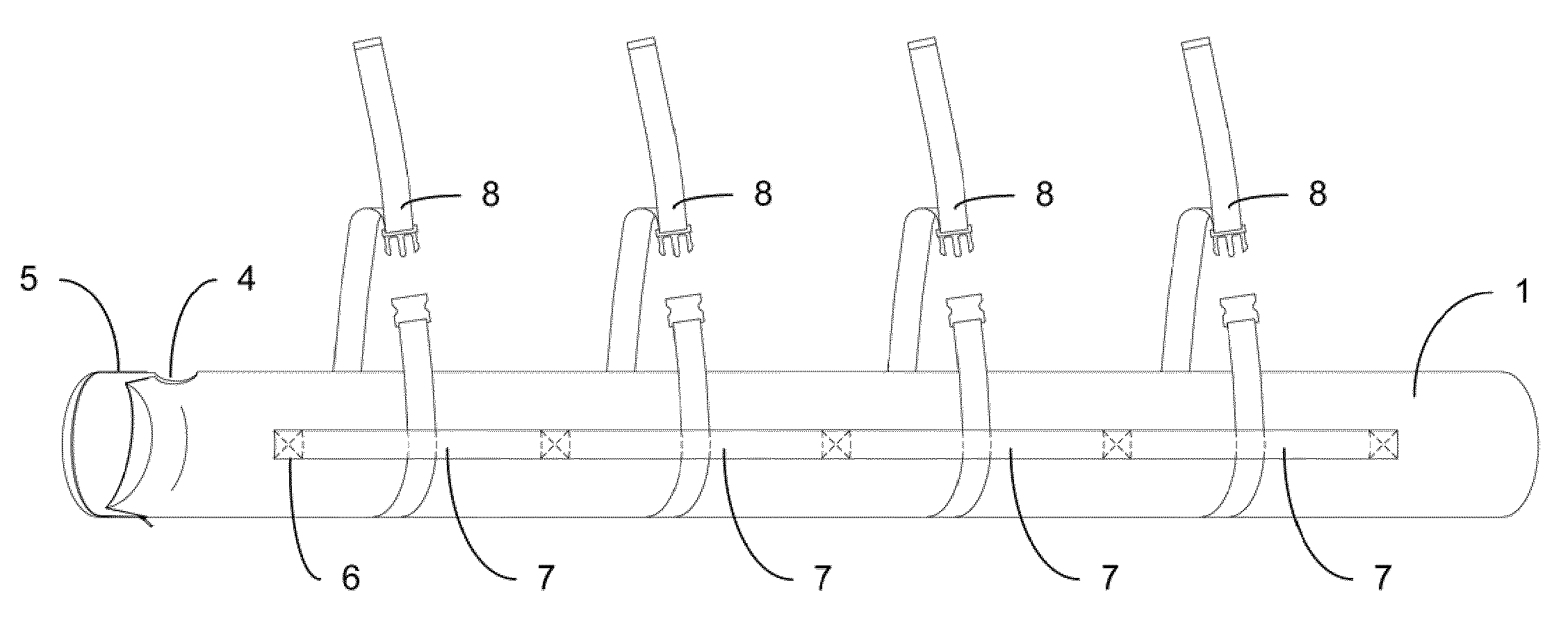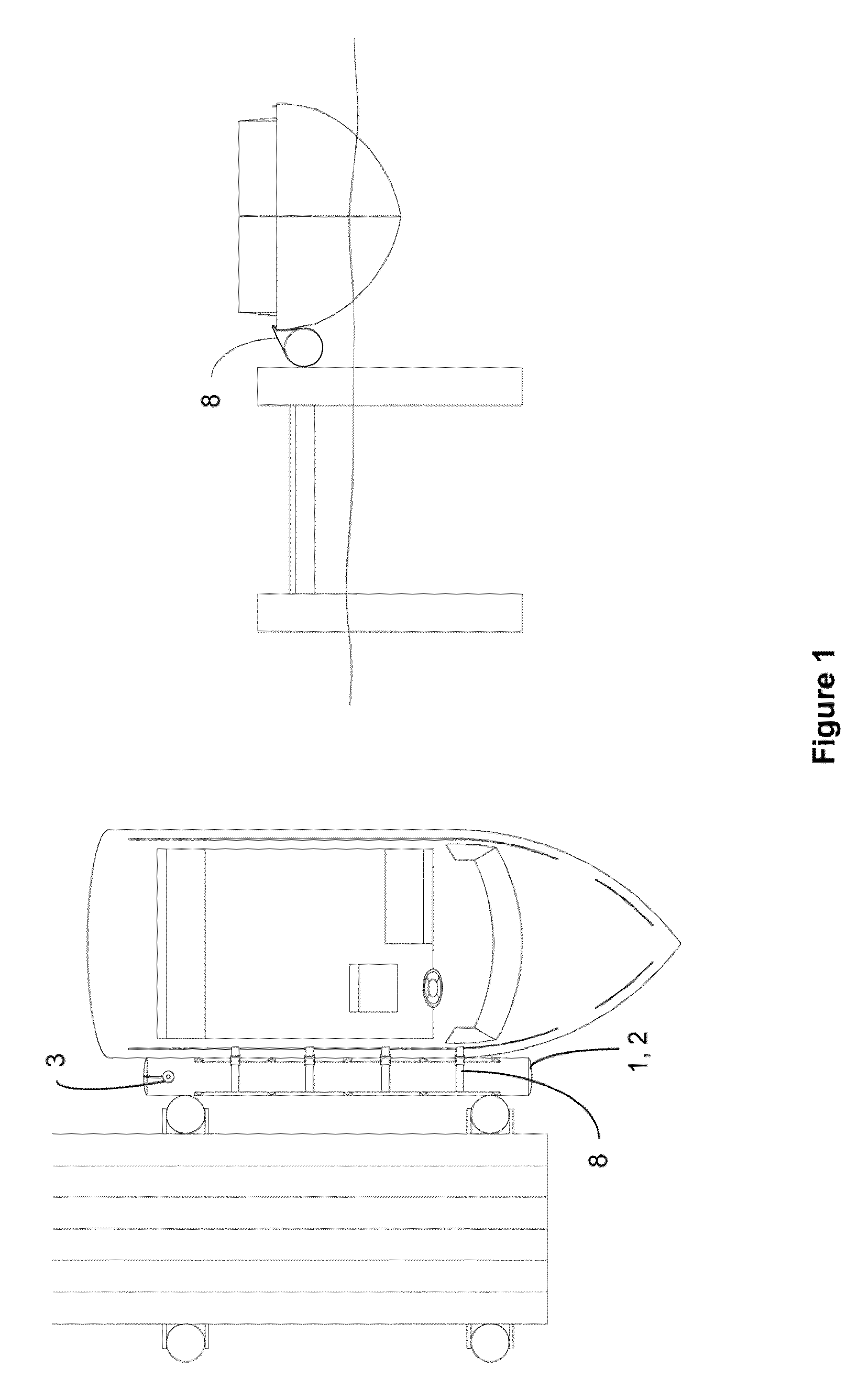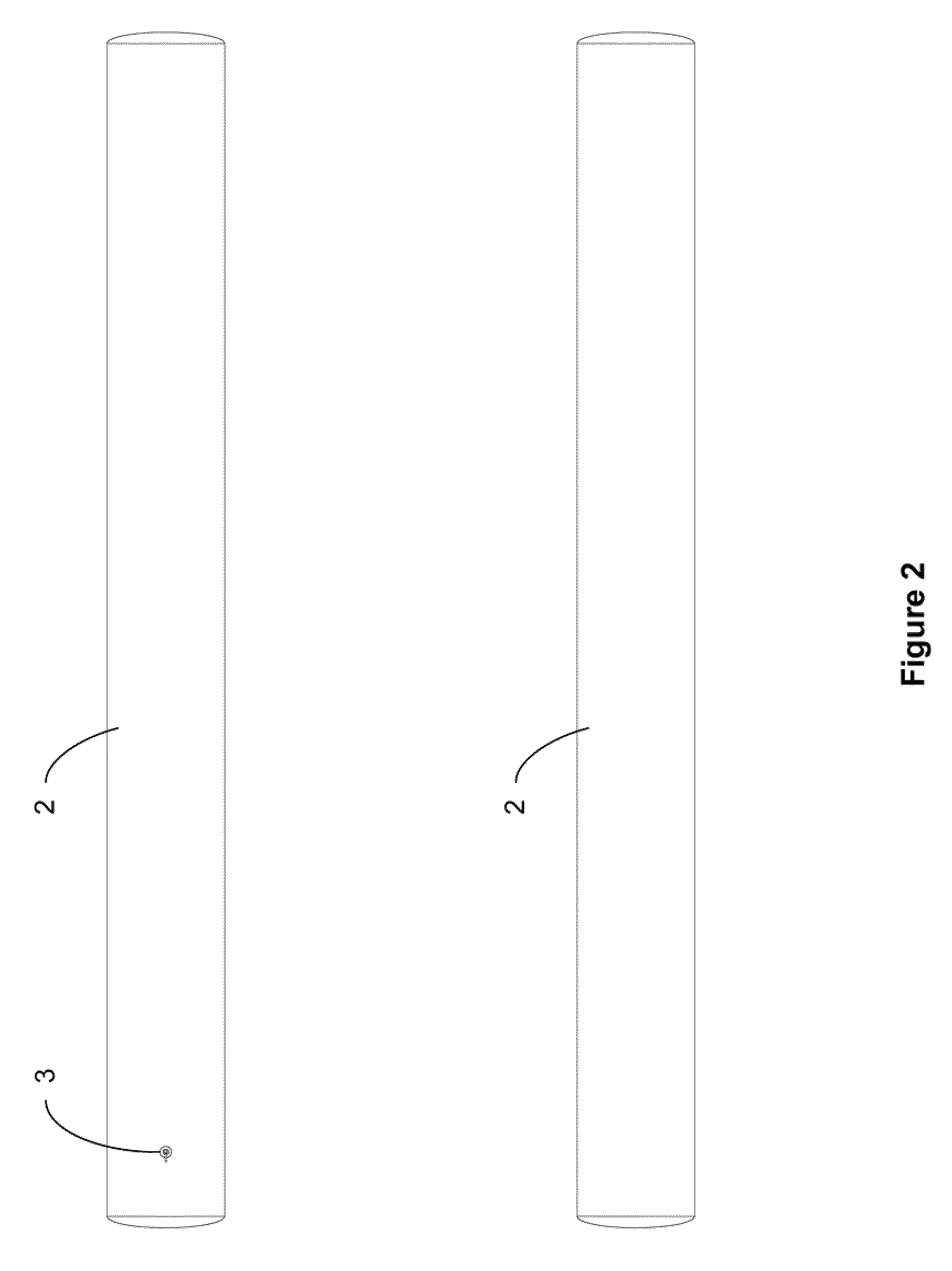Watercraft fender
a technology for fenders and watercraft, applied in the field of fenders, can solve the problems of fenders slipping out of place due to wave action, negated protection, further damage, etc., and achieve the effects of quick and easy folding for storage, low pressure inflation and rapid deflation
- Summary
- Abstract
- Description
- Claims
- Application Information
AI Technical Summary
Benefits of technology
Problems solved by technology
Method used
Image
Examples
Embodiment Construction
[0048]FIG. 1 is an application view of a boat fender in accordance with the invention. An inflatable bladder (2) resides within a protective cover (1). The cover / bladder assembly is heretofore referred to as “fender”. The length of the fender will vary with the length of the watercraft on which it will be utilized: ideally the length of the longest straight section of the watercraft that is likely to make contact with a dock, pier and / or pilings. Several fenders may be utilized for longer watercraft. The diameter of the fender will also vary with the size of the watercraft. The watercraft does not have to be modified in any manner to utilize the fender.
[0049]In operation, the watercraft is brought alongside the dock or pier to which it is to be moored. The fender is inflated and placed between the watercraft's hull and the dock or pier. If the dock has external pilings, or the rails of the dock or pier are above the gunwale, the watercraft is situated so that the longest straight se...
PUM
 Login to View More
Login to View More Abstract
Description
Claims
Application Information
 Login to View More
Login to View More - R&D
- Intellectual Property
- Life Sciences
- Materials
- Tech Scout
- Unparalleled Data Quality
- Higher Quality Content
- 60% Fewer Hallucinations
Browse by: Latest US Patents, China's latest patents, Technical Efficacy Thesaurus, Application Domain, Technology Topic, Popular Technical Reports.
© 2025 PatSnap. All rights reserved.Legal|Privacy policy|Modern Slavery Act Transparency Statement|Sitemap|About US| Contact US: help@patsnap.com



